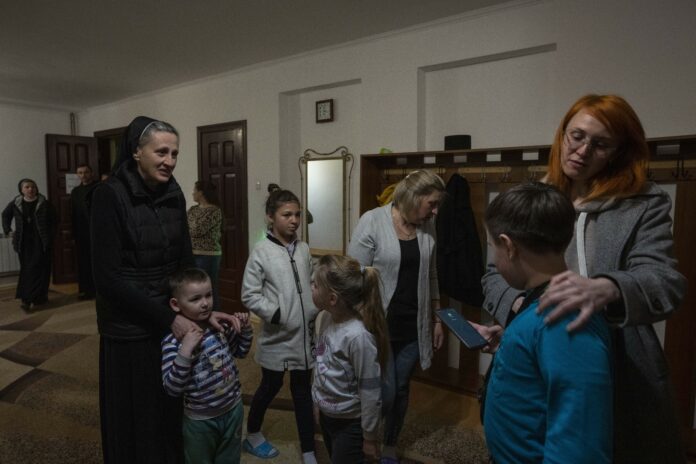A makeshift chapel there is decorated with a painting of Mary and baby Jesus, a candle and a large cross made of branches. Mattresses, blankets and benches also line the basement. One of the walls had “The Prodigy” written in chalk, an apparent homage to the British dance-electronic band.
But even when there are no sirens, children happily use the cavernous underground space.
“We play, and read prayers,” said Rostyslav Borysenko, a 10-year-old, who fled besieged Mariupol with his mother. “It helps.”
His mother is still anxiously awaiting news of relatives and friends who couldn’t escape Mariupol, or were evacuated to eastern areas controlled by Russian-backed separatists.
Despite being thousands of kilometers from the frontlines, conversation at the dinner table mostly revolved around war.
While the families break bread in the dining room, the nuns dine separately in the library, at a long table under a painting of the Last Supper. Among them is 44-year-old Sister Josefa, who was evacuated from a Kyiv monastery on the first day of the war.
“It’s hard to leave the place you lived,” she said. “Although I can live here … my heart is there. And I’m waiting to go back.”
___
Associated Press photojournalist Nariman El-Mofty contributed to this report.
This article originally appeared here.

